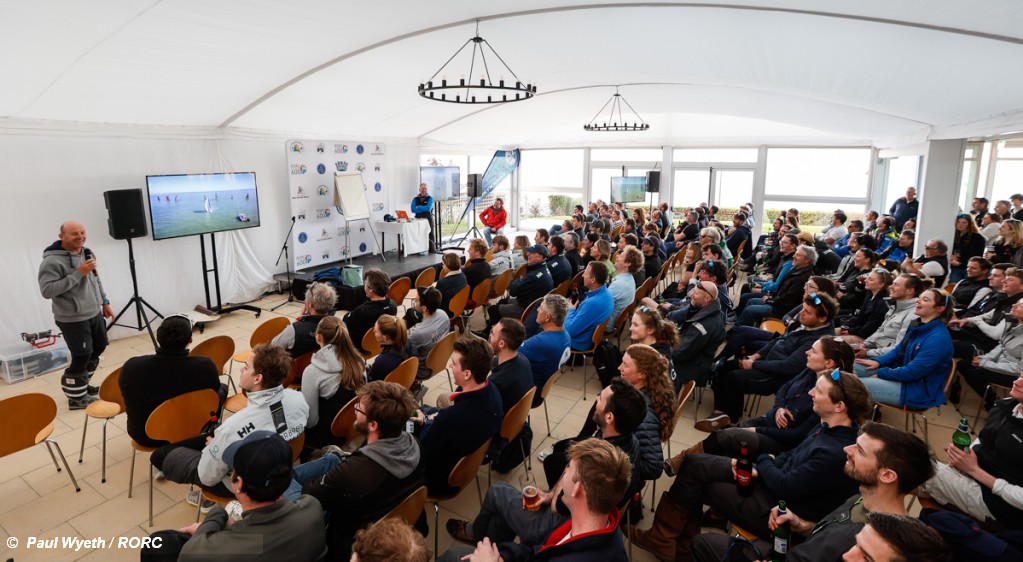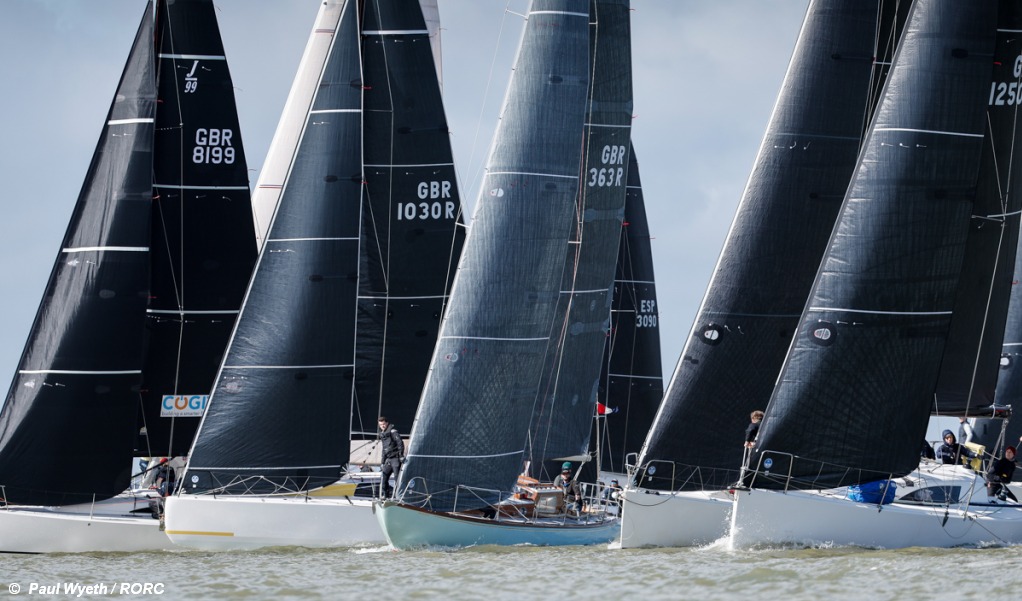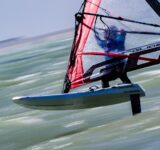It was all change on the second day of the 2024 RORC Easter Challenge with a light southerly of about ten knots with Spring sunshine breaking through the clouds.
Off Lee-on-Solent, PRO Stuart Childerley and the RORC team set three short, energy sapping, windward leeward races for all classes.
Congratulations to Saturday’s race winners:
- Ed Mockridge’s JPK 1010 Elaine Again
- The Army Sailing Association’s Sun Fast 3600 Fujitsu British Soldier skippered by Henry Foster
- John Smart’s J/109 Jukebox
- Simon Perry’s Cape 31 Jiraffe
- Blanshard & Smith’s Ker 36 Skermisher
- Lance Adams’ Cape 31 Katabatic
- Mills 39 Team Hero on Zero II, skippered by James Gair.
Race Four, the last race of the day, had the novelty of a downwind start. Hitting the ‘B’ of the bang for race starts and finding clear air were the keys to a good performance.

After racing a video debrief was held at the Royal Yacht Squadron Pavilion. The coaching team presented to a full turn-out of competitors eager to learn. Below are some of the key takeaways.
North Sails UK General Manager Ian Walker – Golden Nuggets . . .
Wind speed transition – When the breeze goes from 6 to10 knots, the crew need to change from weight in board, or to leeward, to getting weight onto the high side. trimmers have to change the shape of the sails in the puffs and lulls.
Avoid the layline – If you take the boat all the way to the layline you can get tacked onto. it is better, in most cases, to tack before the layline, letting other boats go beyond you. You can then double tack and put them in your dirt.
Think about the tide – Today, light airs and big tide changed the laylines. This affected where to start and also the approach to mark roundings.
Positioning on the race track – when it’s light, clear air is really important for speed. There will be a lot of disturbed air in the middle of the course, especially if there are three fleets like today. You have to be bold and choose a side, going up the middle rarely works. Often both sides can pay, but choosing the right side for positive wind shifts and good pressure is the key.
Tacking in light airs – the crew need to think about moving their weight, staying on the old side to induce heel and then moving over together as a unit. This will help the driver as shifting weight together will aid the boat through head to wind, meaning less movement of the rudder.
Trim Set Up – Think about your trim through the tack, easing before the helm goes over just a few inches, will keep the boat speed up through the turn. After the turn, counting the speed build before sheeting on will accelerate the boat after the tack.
Racing concludes at the RORC Easter Challenge Sunday 31 March with the customary Easter Egg toss at The RYS Pavilion.







